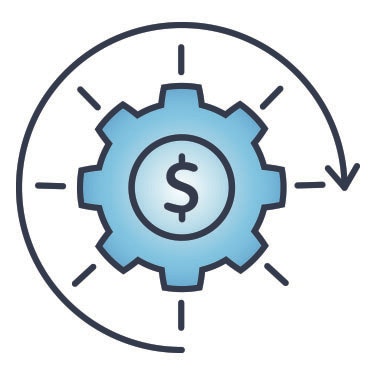
Companies are gaining economic efficiencies as they move workloads to the cloud, but maintaining financial benefits can be a challenge. The stampede is still accelerating, but an uncertain economy is putting pressure on the CIO to accurately predict cloud infrastructure costs. Here are five ways CIOs can optimize cloud costs and produce positive ROI.
By 2023, 50% of business workloads are expected to run in the cloud. That’s up from 40% in 2021, according to the Spiceworks Ziff Davis 2022 State of IT Report. In recent years, enterprises have enthusiastically embraced the cloud because of its highly attractive value proposition – immediate access to blazing fast infrastructure deliver high performance, operational advantages, and economic efficiencies. Improved performance frees up resources to foster strategic innovation, product development, and growth. And since cloud costs are operating expenses instead of capital expenses, infrastructure bills vary depending on workload duration, size, and other factors.
All this sounds promising when you start out small, but when it’s time to scale your cloud platform, any CIO will confide that it’s challenging to accurately predict cloud infrastructure costs for the next quarter, let alone next fiscal year. Cloud cost bills are often long micro-accumulation of over provisioning, forgotten instances, and storage costs that can add up quickly. Gartner agrees; they predict 60% of infrastructure and operational leaders will encounter public cloud cost overruns.
In an uncertain economy with enterprise belt tightening, no one looks forward to handing off a bloated cloud bill to the CFO with no to little ROI realization.
Here are five ways CIOs can optimize cloud costs successfully.
1. Don’t pay for what you don’t use

During the pandemic, cloud infrastructure vendor sales teams were incentivized to maximize cloud access license and cloud usage cycles, resulting in monthly cloud service overcommitments. Consider conducting quarterly or annual audits to evaluate your subscriptions. You may discover a huge gap between cloud access and active individual use. Right-sizing your subscription provisioning is one way to reduce costs.
2. Use RBAC as a cost control

Self-service is a huge cloud selling point, but what happens when less tenured internal stakeholders or contractors frequently access the cloud for workload provisioning, deployment, monitoring and troubleshooting? Often they are not cognizant of usage costs. Some CIOs have reviewed cloud platform role-based access controls (RBAC) and recommended limiting access to core teams of cloud architects and engineers who have had basic training in cloud cost management.
3. Incentivize IT teams

Why can’t cloud infrastructure spend be considered a new business KPI? For decades, enterprise teams have successfully used short-term incentives in sales departments (e.g., SPIFFs) or QA departments (bug bounties) for KPI momentum. Recently, CIOs have taken a note from this playbook. Because managing cloud resources is a continuous process that requires oversight, vigilance and governance, some have partnered with CTOs and IT departments to put spot bonus structures in place for engineers who have shut down forgotten instances or optimized workloads that result in measurable monthly cost reductions.
4. Negotiate commercial terms

One benefit of the cloud is the agility it offers to spin instances up or down at speed. But there are always capacity planning tradeoffs. On-demand spot pricing appeals to many enterprises because they are only charged for short-term capacity without long term commitment, but this decision comes at a high cost. Moving from on-demand based pricing to reserved instances can result in cost savings if you have stateless workloads that can handle disruption such as batch jobs and other tasks. Reserve instances require up to a three-year commitment and price capacity planning, but the savings realized can be in the millions of dollars.
Ele.me, a leading food delivery platform in China who experienced daily peak load periods during lunch and dinner, switched to Azul to reduce hardware use by 50% and decreased the number of Java instances by 75%.
5. Shop around

Discounts realized during your initial contract year often wouldn’t be as significant as ones offered on future contract renewals. If your cloud migration isn’t 100% final and your vendor is inflexible during commercial terms negotiation, consider switching providers that offer more value. Sometimes, cloud cost management strategy starts with the open mindset of evaluating vendor alternatives. Terminating a cloud provider contract is easier than locked-in MSA on-premises software contracts, provided you have a back-up exit strategy. Back up and archive any data on the cloud frequently to make re-migration smoother if and when you change providers.
Conclusion
CIOs, CFOs, and other business and technical leaders face a paradoxical set of challenges – deliver innovative cloud-based applications while controlling costs. Even with a cloud cost optimization strategy, keeping cloud costs low can be difficult. CIOs can optimize cloud costs, and the five tactics in this article can help.
Azul helps customers solve this Cloud Paradox by removing the false choice between performance and cost optimization. We help companies ensure their applications consistently run fast while cutting cloud costs by up to 50 percent. Companies that efficiently leverage the cloud’s agility and scale enjoy profitable growth and category leadership.
Are you considering a switch to a third-party Java provider? Discover more ways to optimize your cloud costs. Then explore Azul’s flexible pricing. Then calculate your potential savings.




